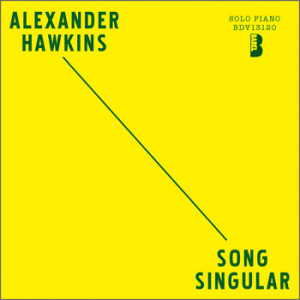Sometimes you really have to dig deep to find something of great value in that genre once coined „New Age“, crammed with wrong nirvanas and boring heavens. If heaven actually is a place where nothing really happens, the music of Jordan De La Sierra´s „Gymnosphere“ might be a place of constant wonder: a lot is going on here (in a very silent way) – lonesome notes drifting endlessly through a sacred space. As we know, sacred spaces often are a big deal for long reverberations. Call Eno´s classic „Music For Airports“ a (very) distant relative, and you´re close.
The desert has always been a place for inspiration, from Harold Budd to Giant Sand, and Polar Bear´s new album „Same As You“ is no exception. Though it starts with some Woodstock mysticism, invocations of light and love, don´t hesitate to surrender to the overall flow of the six tracks. A wonderful mix using field recordings without any resemblance to the usually „holy desert sounds“, the album is captivating from start to end. Arthur Russell would been totally enthusiastic about this work of art. The dancing, joyful lines of the two saxophones add to the excellent mix of the primal, the melodic and the experimental. So this may be one of England´s finest contributions to the American „West Coast“-culture ever, known for relaxed moods, skilled studio musicians – and even Sonny Rollins once wearing a cowboy hat.
„A Most Violent Year“ is a fantastic movie, a time travel to New York City, 1981 (the year Eno and Byrne created „My Life In The Bush Of Ghosts“, in Manhattan), shot with late 70´s vibes and colors, and, nevertheless, likewise oldfashioned and inventive. That´s saying a lot about a genre movie linked with gangster syndicates, archetypal anti-heroes from another era and the usual suspects from the old „New Hollywood“. The gist of the matter: J.C. Chandor is really doing fine in creating a new skin for an old ceremony. At times with breathtakingly slow speed, packed with the devil in the details (beware of the soundtrack, sparse and subtle), and, one of the most thrilling chase-scenes since Cary Grant had been attacked by a small aeroplane in „North By Northwest“. Chandor knows when it´s time to speed up. Pop corn fodder? Not at all, more of a descent into the underworld (in the psychic sense of the word). For example, within one single shocking second, you are transported from an overcrowded tube train to a deserted, ghost-like station (in the middle of NYC) – a good place to meet the inner demons.
And coming to terms with your own demons, you might want to enter the sceneries of the „Thriller of April“. I´m still running through the last hundred pages, and, as you know, you shall not sing the praise of day till the last ray of light has vanished from the sky, and darkness surrounds you with all horror or relief delivered on the last page. Will the story linger in your mind, or is it just a cheap thrill and utterly forgettable? Wait and see. Manafonista Wolfram recently recommended an ancient thriller by Chester Himes. That book might be the other option. Himes can compare in quality to Chandler and Hammett, and he clearly is commenting on and developing their novels, plots and style. The past remains a treasure grove. But you can easily be trapped by it. Chester Himes, and J.C. Chandor luckily know the exit signs.

